Key takeaways:
- Cannabis is gaining recognition for its potential therapeutic benefits in managing depression, shifting societal stigma around its use.
- Different strains (indicas for relaxation, sativas for energy) and methods of consumption significantly impact individual experiences with cannabis.
- Understanding personal dosage and delivery methods is crucial for maximizing the benefits of cannabis while minimizing discomfort.
- Creating a safe environment and seeking guidance from knowledgeable professionals can enhance the overall cannabis experience.
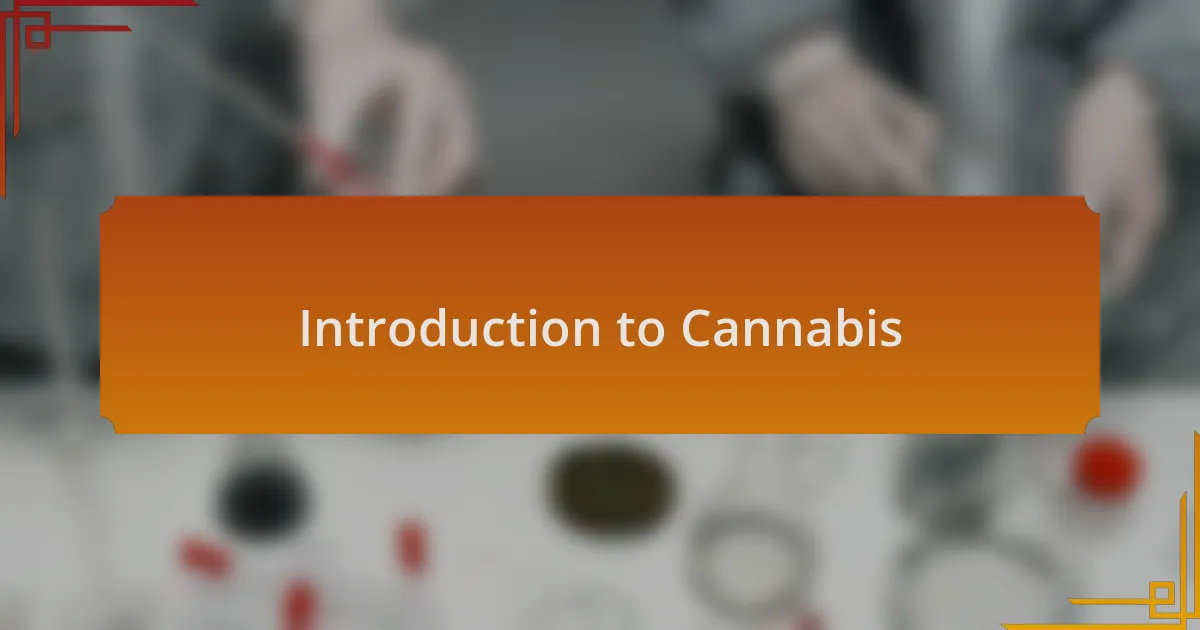
Introduction to Cannabis
Cannabis has been a part of human culture for centuries, used for its medicinal properties and psychoactive effects. I remember the first time I tried it—I felt a wave of calm wash over me, which was a stark contrast to the anxiety that often consumed my daily life. What makes cannabis so compelling is its versatility; it’s not just about getting high, but also about exploring its potential therapeutic benefits.
With a growing body of research highlighting its use in managing various conditions, cannabis is starting to shed its stigma. Have you ever found yourself wondering why something as natural as cannabis has such a complex history? Many users, myself included, see it as a bridge to better mental well-being, offering relief where traditional methods may fall short.
Different strains and methods of consumption can greatly affect your experience. I’ve found that experimenting with different types has not only informed my own mental health journey, but it has also prompted meaningful conversations with friends and family about our shared struggles. The more I dive into the world of cannabis, the more I see it as an opportunity for personal growth and understanding.

Understanding Depression and Its Symptoms
Depression is often more than just feeling sad; it’s a persistent cloud that can dim your perspective on life. I can recall times when even the simplest tasks felt monumental—like getting out of bed or enjoying a favorite meal. The symptoms of depression can manifest physically and emotionally, ranging from fatigue and loss of interest in activities to feelings of hopelessness. Have you ever experienced that heavy weight on your chest, making it hard to breathe?
Understanding these symptoms can be the first step in recognizing one’s mental health struggles. It’s crucial to remember that depression can vary widely from person to person; for some, it’s a constant battle, while others might experience it in waves. There were moments when I would burst into tears for no apparent reason, leaving me confused and searching for answers.
Being aware of these signs helps not only in identifying one’s own struggles but also in supporting others. Often, I found myself in conversations where friends would share their experiences, bringing comfort in knowing I wasn’t alone. It’s striking how a simple acknowledgment of these feelings can pave the way for genuine connection and healing. What does understanding depression mean to you?
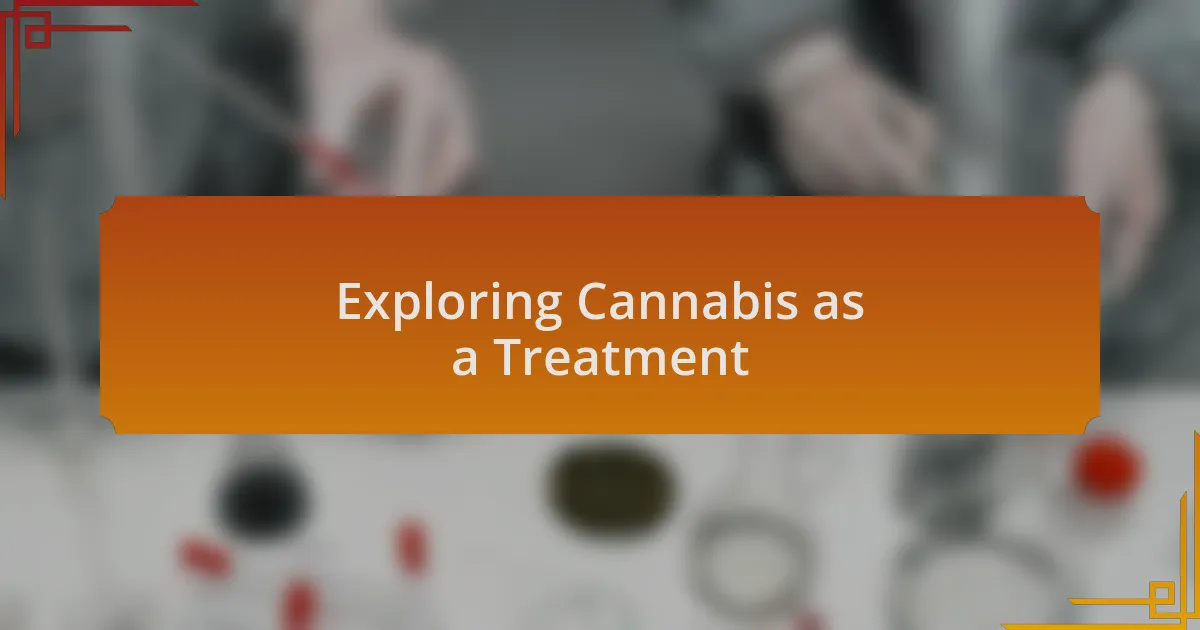
Exploring Cannabis as a Treatment
Cannabis has emerged as an intriguing option for managing depression, with many individuals exploring its potential benefits. I remember the first time I tried it; the heavy fog of sadness lifted slightly, allowing me to engage in conversations that I previously found draining. It’s fascinating how something so contentious can offer a respite, even if just temporarily—have you ever wondered why that is?
Research suggests that cannabis can impact our endocannabinoid system, which plays a role in regulating mood and emotional responses. For me, the right strain felt like a gentle nudge toward a calmer state of mind, although it also highlighted the importance of finding what works for each individual. The experience made me realize that, while cannabis isn’t a cure-all, its potential in treating depression shouldn’t be overlooked—what could it mean for someone still struggling with traditional treatments?
It’s essential to approach cannabis with caution but also with an open mind, as personal stories often reveal its mixed effects. I’ve heard from friends who experienced anxiety spikes with certain strains, prompting me to be mindful of what I choose. It invites a deeper question: How can we balance these varying experiences to find a personalized approach that truly supports mental health?
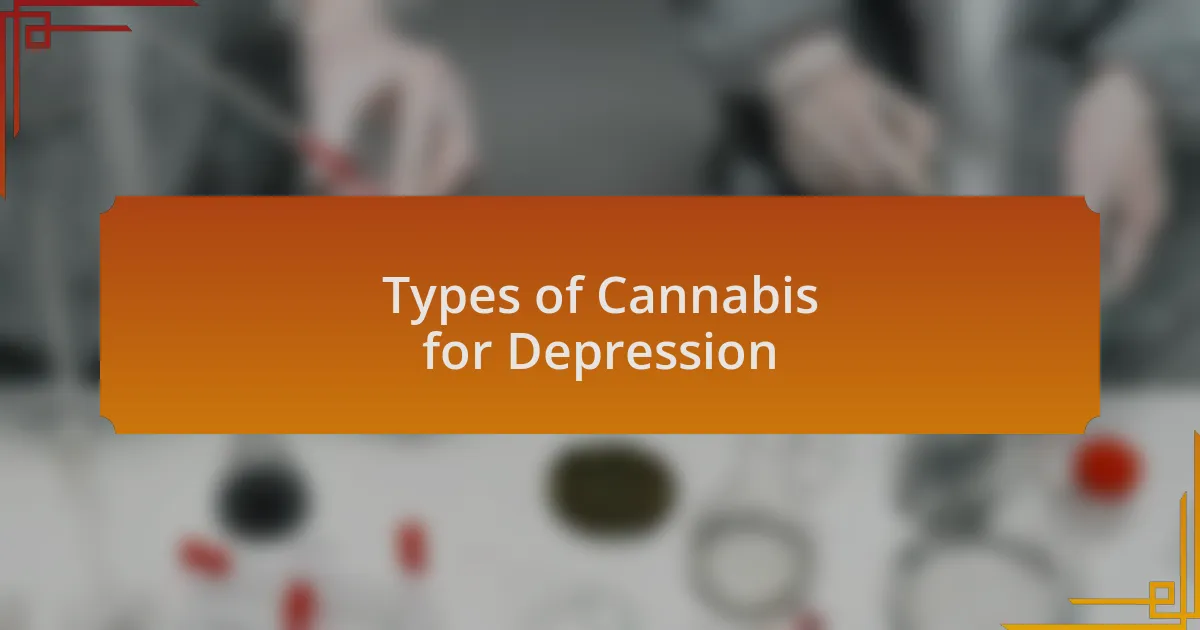
Types of Cannabis for Depression
When it comes to types of cannabis for managing depression, I’ve found that different strains can significantly alter the experience. For instance, indicas often provide a calming effect, which was beneficial for me after particularly tough days. I remember using an indica strain one evening, and it helped me unwind, easing my racing thoughts and creating a peaceful atmosphere—doesn’t that sound appealing when you’re feeling overwhelmed?
On the other hand, sativas have this uplifting quality that can sometimes ignite creativity and motivation. I once tried a sativa-dominant strain during a creative block, and it felt like a light switch turned on, pushing the shadows aside. The joy and energy I felt reminded me of how crucial it is to choose a strain that aligns with my current mental state—have you ever considered how a certain strain could enhance or dampen your mood?
Hybrid strains, which combine the characteristics of both indica and sativa, offer a balanced approach that can cater to different needs throughout the day. I’ve found some hybrids to be particularly helpful, providing just the right amount of relaxation without clouding my mind. It’s a delicate dance of trial and error, but discovering the ideal strain feels like a step closer to maintaining stability—how often do we overlook the power of nuanced choices in our mental health journey?
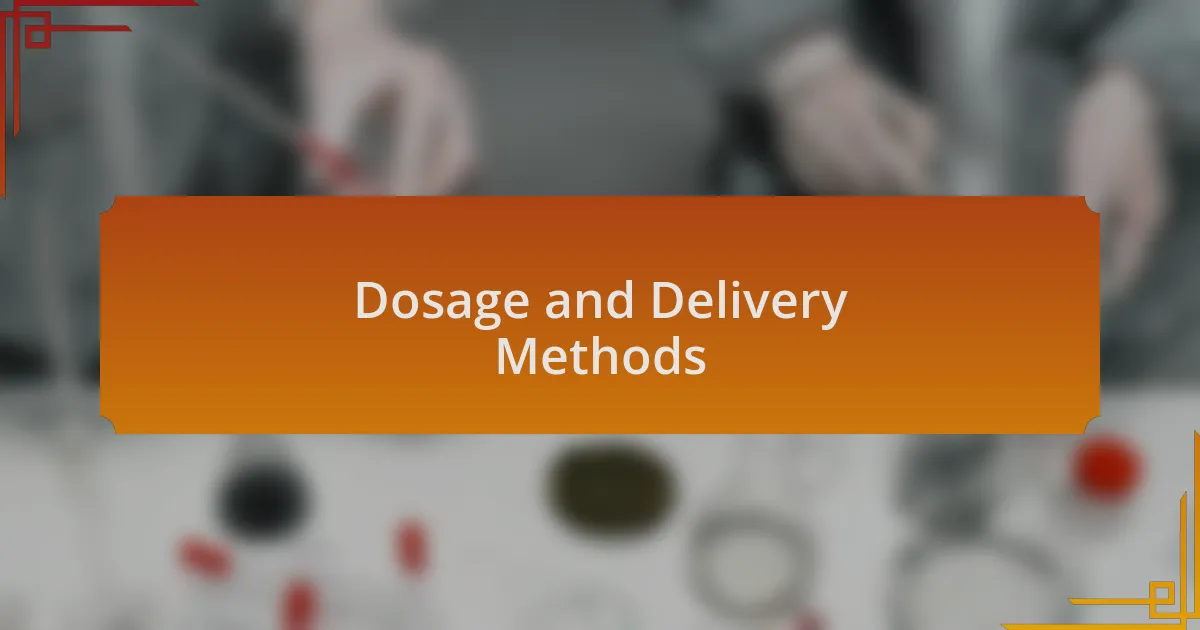
Dosage and Delivery Methods
When it comes to dosage and delivery methods, I’ve learned that finding the right amount is crucial. I once started with a low dose of 5 mg THC, which allowed me to see how my body reacted without overwhelming myself. It’s so important to listen to your body—have you ever noticed how a small adjustment in dosage can shift your experience significantly?
The method of delivery also plays a key role in my routine. I’ve found that vaporizing offers almost instant relief, which is great for those moments when anxiety creeps in unexpectedly. There was a time when I had a particularly tough day and took a few quick puffs; within minutes, I could feel a wave of calm wash over me. Have you explored different methods, like edibles or tinctures, and noticed how the onset time affects your experience?
Additionally, I prefer using sublingual oils for their flexibility and ease of use. Dropping a measured dose under my tongue allows for precise control over my intake, which is something I value greatly. I remember carefully measuring out my dose one morning before work, and it felt empowering to tailor my relief in a way that fit seamlessly into my day—how does it feel for you to take charge of your mental health?
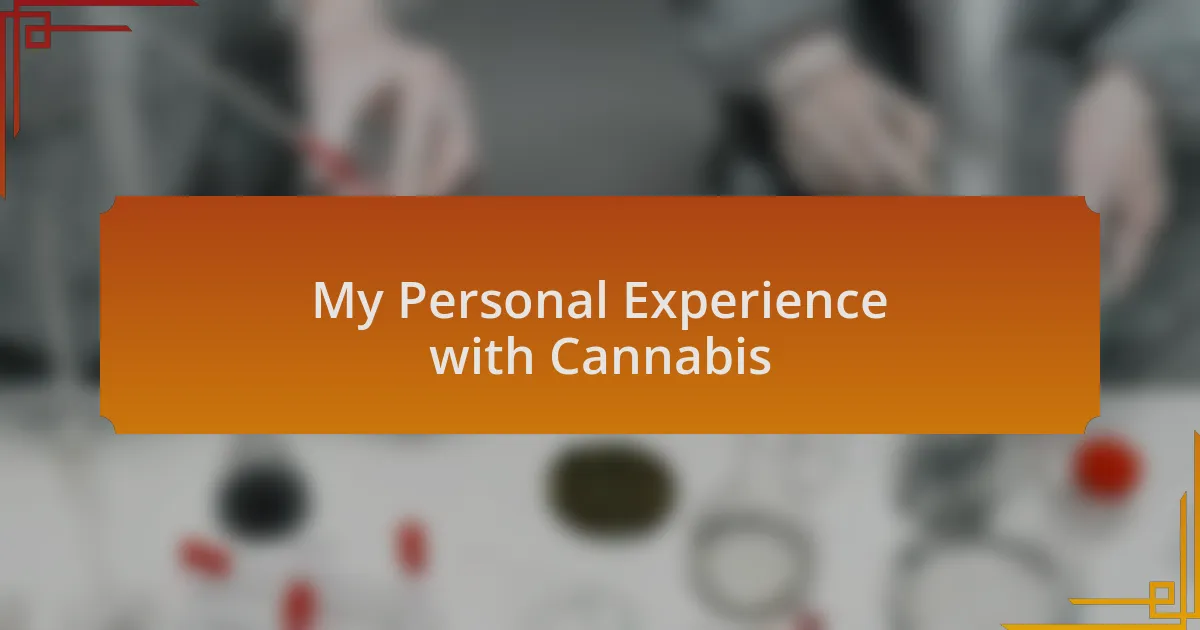
My Personal Experience with Cannabis
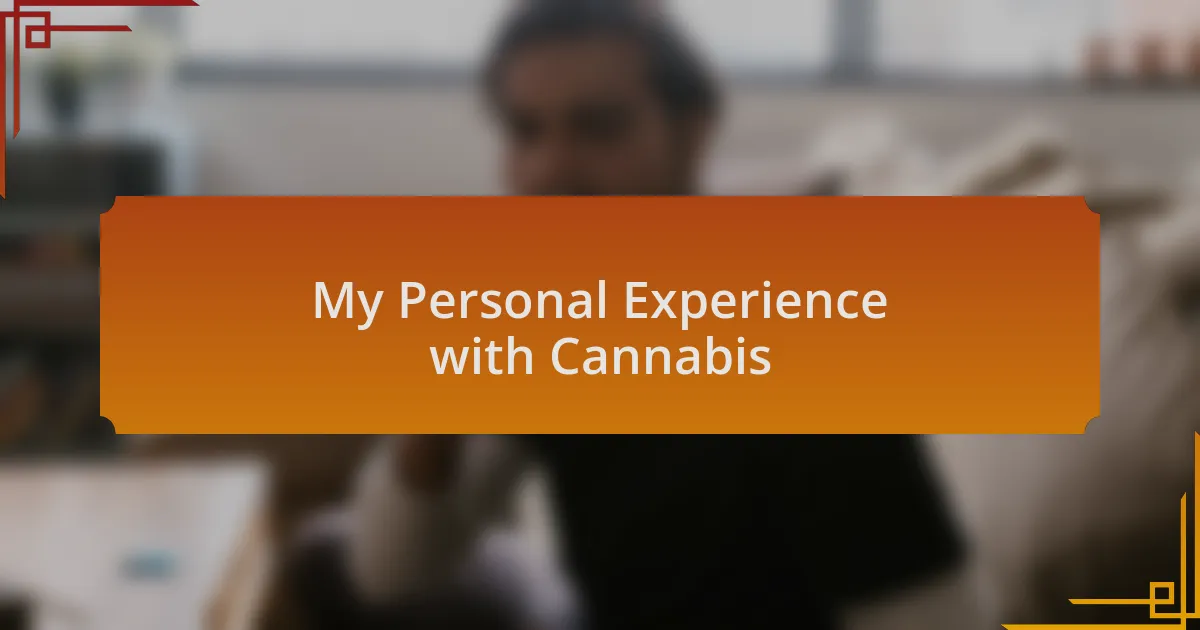
My Personal Experience with Cannabis
Cannabis has been a significant part of my journey in managing depression. I recall the first time I tried it; I was sitting on my couch, feeling overwhelmed, when I decided to take a few puffs. Just a short while later, the dense fog in my mind began to lift, and I felt a lightness that had been missing for so long. Have you ever experienced that kind of sudden shift in perspective?
Over time, I’ve discovered which strains resonate with me. Indica strains, for instance, have provided a sense of deep relaxation, perfect for winding down after a long day. I still vividly remember a particularly anxious week at work; I opted for an indica one evening, and the weight lifted off my shoulders, allowing me a peaceful night’s sleep. Isn’t it fascinating how a plant can offer such transformative experiences?
I’ve also come to appreciate the social aspect of cannabis. Sharing a session with friends opens up conversations in ways that feel authentic and liberating. One night, surrounded by laughter and good vibes, I felt a connection to others that reminded me I’m not alone in my struggles. Have you ever felt that camaraderie through shared experiences? It’s moments like these that highlight not just the relief cannabis brings, but the community that often surrounds it.
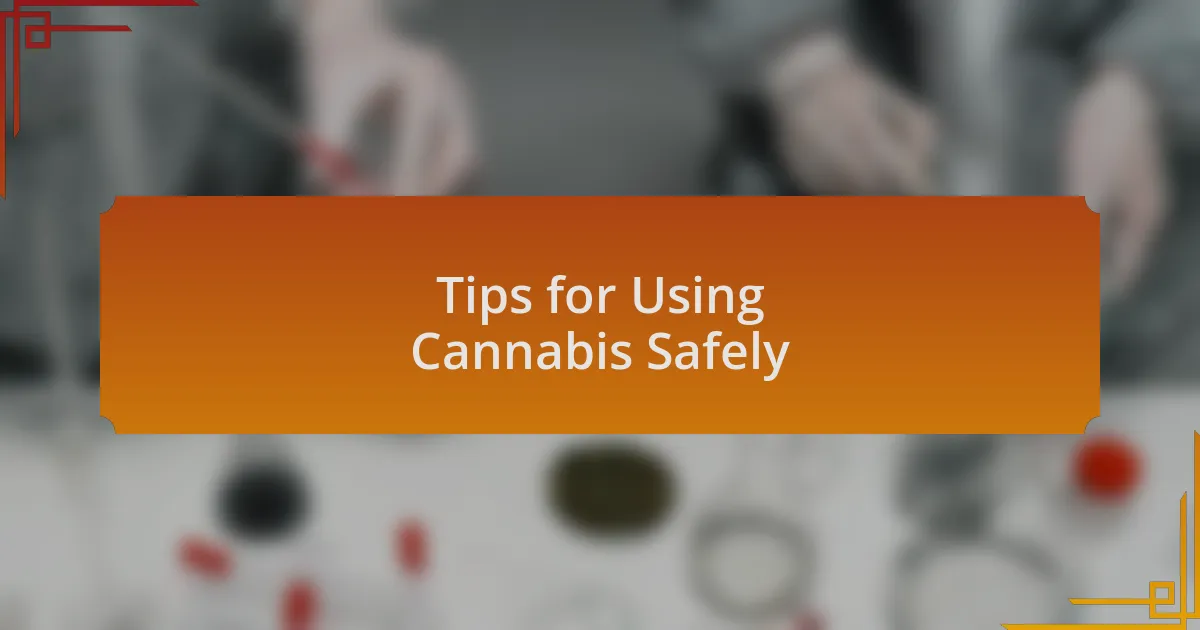
Tips for Using Cannabis Safely
Using cannabis safely is crucial for getting the most out of its potential benefits. For me, it starts with understanding dosage. I remember the first time experimenting with edibles—I underestimated their potency and ended up feeling uncomfortably high for hours. Since then, I’ve learned to start low and go slow, carefully measuring my doses to find what works best without overwhelming myself. Have you ever had a similar experience where taking too much led to anxiety rather than relief?
It’s also important to choose a comfortable and familiar environment. I often find that my surroundings can significantly influence my experience. One time, I decided to try cannabis at a crowded event instead of my usual cozy spot at home. The noise and hustle heightened my anxiety, making the experience less enjoyable. I suggest creating a safe space where you feel relaxed and at ease; this can enhance the overall experience and help you focus on the relief you seek.
Lastly, don’t overlook the importance of consulting with professionals. I once spoke with a knowledgeable budtender who helped me select the right strain for my needs. Their expertise transformed my understanding of cannabis—something I wish I had done earlier. Engaging with someone knowledgeable can guide you in choosing strains that align with your mental health goals. Have you ever considered this kind of support? It can be a game changer in navigating your cannabis journey safely.